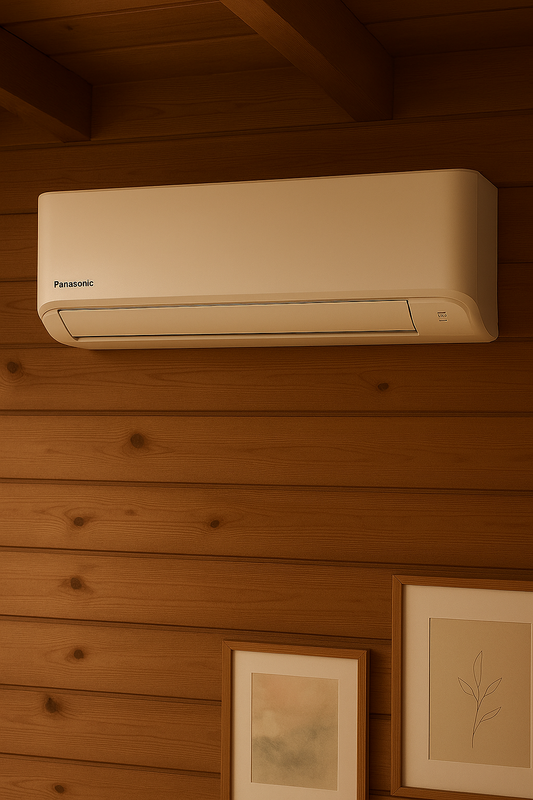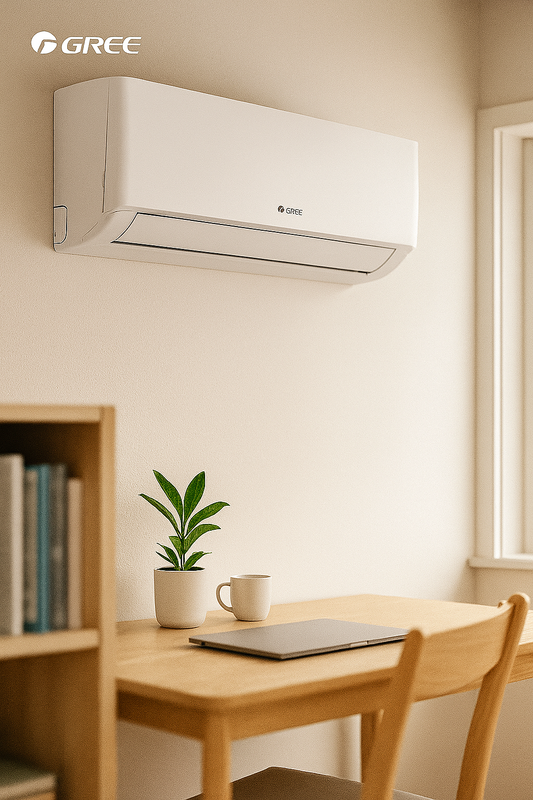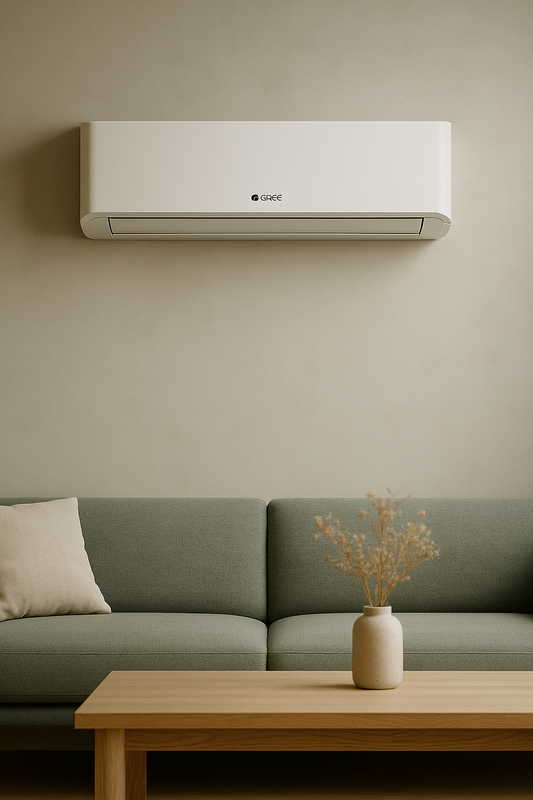Steg för steg: från luftvärmepump till installerad värmepump – tidslinje
Inledning
Att gå från att överväga att installera en värmepump till att ha den installerad och fungerande är en process som kräver noggrann planering och genomförande. I denna artikel kommer vi att gå igenom stegen från att välja en luftvärmepump till att ha en installerad värmepump, och vi kommer att utforska varje steg i processen.
Definition och bakgrund
En värmepump är en energieffektiv uppvärmningsenhet som kan använda olika källor, såsom luft, mark eller vatten, för att producera värme för ett hushåll eller en byggnad. När det gäller luftvärmepumpar utnyttjas den omgivande luften för att producera värme, vilket gör dem populära i många delar av världen.
Fördelar och användningsområden
Luftvärmepumpar erbjuder flera fördelar, inklusive hög energieffektivitet, låga driftskostnader och miljövänlig uppvärmning. Dessa enheter kan också erbjuda kylning under varma förhållanden, vilket gör dem mångsidiga året runt. Luftvärmepumpar används vanligtvis i bostäder, kommersiella fastigheter och offentliga byggnader.
Relaterade tekniker, begrepp eller variationer
Det finns flera variationer av värmepumpar, inklusive markvärmepumpar och vattenkälla värmepumpar. Markvärmepumpar utnyttjar värmen från marken för att producera värme, medan vattenkälla värmepumpar använder vatten som energikälla. Dessa variationer kan vara lämpliga beroende på plats och tillgängliga resurser.
Vanliga frågor (FAQ)
-
Hur lång tid tar det att installera en värmepump?
Installationstiden för en värmepump kan variera beroende på faktorer som typ av enhet, plats och befintlig infrastruktur. Generellt sett kan installationen ta några dagar till en vecka.
-
Vad är underhållskraven för en värmepump?
Regelbunden rengöring och underhåll av filter, kontroller av vätskenivåer och årlig service av en certifierad tekniker rekommenderas för att säkerställa att värmepumpen fortsätter att fungera effektivt.
-
Vilka kostnader är förknippade med att installera en värmepump?
Kostnaderna för att installera en värmepump kan variera beroende på flera faktorer, inklusive enhetens storlek, installationsplatsen och eventuella nödvändiga förbättringar av infrastrukturen. Det är bäst att få en skräddarsydd offert från en kvalificerad installatör.
Sammanfattning
Att gå från att överväga att installera en värmepump till att ha den installerad och fungerande kan vara en givande process som resulterar i effektiv och miljövänlig uppvärmning och kylning. Genom att förstå stegen och överväga olika alternativ kan hushåll och företag dra nytta av fördelarna med värmepumpar.
Installation Process
Once the decision to install a heat pump is made, the installation process begins. This involves several key steps, including site assessment, equipment selection, and installation planning. Each of these steps is crucial to ensuring the efficient and effective installation of the heat pump.
Regulatory Compliance and Safety
Compliance with local regulations and safety standards is a critical aspect of the installation process. Installers must adhere to building codes, electrical regulations, and environmental guidelines to ensure the safe and legal installation of the heat pump system. Prioritizing regulatory compliance safeguards the integrity and performance of the installation.
Quality Assurance and Testing
Upon completion of the installation, thorough testing and quality assurance checks are conducted to verify the proper functioning of the heat pump system. This includes testing the heating and cooling capabilities, assessing energy efficiency, and ensuring the overall performance meets the specified requirements. Quality assurance measures are essential for delivering a reliable and effective installation.
Post-Installation Support
Following the installation, comprehensive support and guidance are provided to the property owners. This includes instructions for operating the heat pump, maintenance recommendations, and addressing any inquiries related to the newly installed system. Offering post-installation support enhances customer satisfaction and ensures the long-term success of the heat pump.
Optimizing Energy Efficiency
Maximizing the energy efficiency of the heat pump is a priority during the installation process. This may involve integrating smart thermostats, zoning systems, or renewable energy sources to enhance the overall efficiency of the heating and cooling system. By optimizing energy efficiency, property owners can reduce operational costs and minimize environmental impact.
Integration with Existing HVAC Systems
For properties with existing HVAC systems, seamless integration of the heat pump is essential. Compatibility with the current infrastructure, ductwork, and control systems is carefully evaluated to ensure a smooth transition and effective operation. Proper integration enables the heat pump to complement and enhance the performance of the existing heating and cooling setup.
Remote Monitoring and Control
Utilizing advanced technology, remote monitoring and control capabilities can be incorporated into the heat pump system. This allows property owners to remotely adjust temperature settings, monitor energy usage, and receive real-time performance insights. Remote monitoring enhances convenience, energy management, and system maintenance.
Financial Incentives and Rebates
Exploring available financial incentives and rebates for heat pump installations is an important consideration. Many regions offer incentives for adopting energy-efficient heating and cooling solutions, which can offset initial investment costs and contribute to long-term savings. Understanding available incentives can make the installation more cost-effective.
Environmental Impact Assessment
Assessing the environmental impact of the heat pump installation involves evaluating factors such as carbon emissions reduction, refrigerant choices, and overall sustainability. By considering the environmental implications, property owners can make informed decisions that contribute to a greener and more sustainable approach to heating and cooling.
Performance Monitoring and Maintenance
Establishing a robust performance monitoring and maintenance plan is essential post-installation. Regular inspections, filter replacements, and system tune-ups are integral to maintaining the optimal performance and longevity of the heat pump. Proactive monitoring and maintenance help prevent potential issues and ensure consistent performance.
Cost Considerations
When considering the installation of a heat pump, it is important to factor in the associated costs beyond the initial purchase and installation. This includes evaluating potential energy savings, operational expenses, and long-term maintenance requirements. Understanding the comprehensive cost considerations enables property owners to make informed decisions regarding heat pump installations.
Adapting to Property Requirements
Each property presents unique requirements and considerations when it comes to heat pump installations. Factors such as building structure, insulation levels, and existing heating systems influence the adaptation and customization of the heat pump solution. Tailoring the installation to align with specific property requirements ensures optimal performance and efficiency.
Enhancing Indoor Air Quality
Integrating air purification and filtration systems as part of the heat pump installation can significantly enhance indoor air quality. By removing pollutants, allergens, and contaminants from the indoor environment, property occupants can benefit from improved health and comfort. Enhancing indoor air quality complements the heating and cooling capabilities of the heat pump.
Remote Diagnostic Capabilities
Incorporating remote diagnostic features into the heat pump system enables proactive monitoring and early detection of potential issues. This advanced capability allows for timely maintenance and troubleshooting, minimizing downtime and ensuring continuous operation. Remote diagnostic capabilities contribute to the reliability and performance of the heat pump.
Customized Control Strategies
Implementing customized control strategies for the heat pump system enables precise temperature management and energy optimization. This may involve utilizing programmable settings, smart scheduling, and zone-based controls to tailor the heating and cooling operation to specific preferences and occupancy patterns. Customized control strategies maximize comfort and efficiency.
Seasonal Performance Optimization
Optimizing the performance of the heat pump across different seasons requires strategic adjustments and settings. From winter heating requirements to summer cooling demands, seasonal performance optimization involves fine-tuning the system to deliver consistent and efficient operation throughout the year. Seasonal optimization ensures year-round comfort and energy savings.
Data-Driven Performance Analysis
Utilizing data-driven performance analysis tools provides valuable insights into the operational efficiency and effectiveness of the heat pump system. By analyzing performance data, property owners can identify trends, consumption patterns, and opportunities for further optimization. Data-driven analysis facilitates informed decision-making and continuous improvement.
Sustainable Refrigerant Selection
Choosing environmentally friendly and sustainable refrigerants for the heat pump system aligns with efforts to minimize ecological impact. Evaluating the lifecycle impact and global warming potential of refrigerant options enables property owners to select solutions that prioritize sustainability and environmental responsibility. Sustainable refrigerant selection contributes to a greener installation.
Adherence to Industry Standards
Adhering to established industry standards and best practices is essential throughout the installation process. This includes compliance with efficiency ratings, performance certifications, and quality assurance protocols to ensure the reliability and longevity of the heat pump system. Adherence to industry standards reflects a commitment to excellence and customer satisfaction.
Continuous Training and Education
Providing ongoing training and educational resources to property owners and occupants fosters a deeper understanding of the heat pump system and its capabilities. Empowering individuals with knowledge about system operation, energy-saving practices, and maintenance guidelines promotes efficient usage and long-term satisfaction. Continuous training and education support a positive ownership experience.





